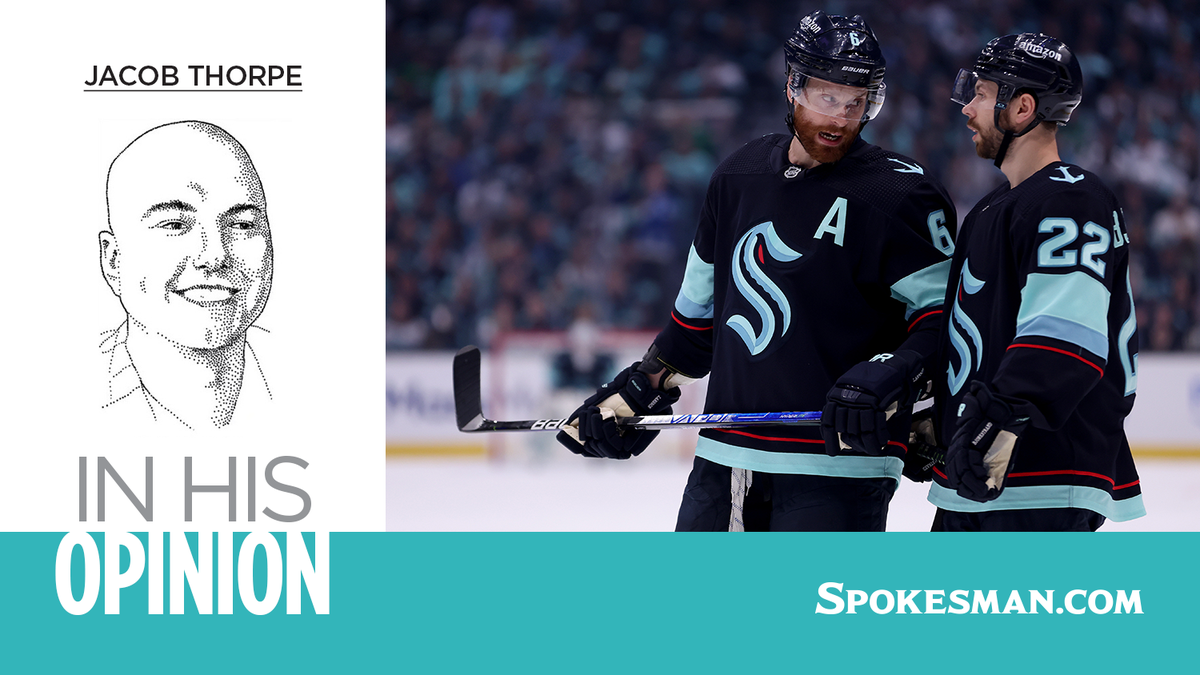Jacob Thorpe: The Kraken can learn plenty from Spokane when it comes to building hockey culture

The following is an essay on first love and mature love, love that is familial and love that is fraternal. That’s right – we’re talking about Spokane hockey.
There is a natural symbiotic relationship between the sport and working-class, union-built towns. Among major professional sports, hockey is unique in the degree to which individual statistics are de-emphasized in favor of team success.
It is a well-known fact in hockey circles that Spokane punches above its pad level when it comes to producing skaters, but you have to be in hockey circles to know. Kids in Spokane who grow up playing hockey play it extremely well, and a more-than-respectable number end up getting paid to do so.
Many of these youngsters collect their first paycheck from the junior league team they grew up watching, the Spokane Chiefs. It’s a small, successful community. Tyler Johnson plays for the Chicago Blackhawks. His mom taught him to skate. She also taught Kailer Yamamoto to skate, and he has also turned that skill into an NHL career for the Edmonton Oilers.
Tyler Johnson’s mom has coached more NHL players than many successful college coaches.
Derek Ryan, Yamamoto’s teammate on the Oilers, was the initial member of this current Chiefs-to-NHL pipeline. Ryan helped out at a local hockey school when Yamamoto was coming up. Yamamoto’s family had season tickets to Chiefs games, so he grew up drawing inspiration from Ryan and Johnson. Johnson credits Ryan’s success with giving him the confidence that he, too, could make it big.
“I think Spokane has always been a pretty big hockey community,” Johnson said. “You have the Chiefs, and the Flames and the Jets before that.”
While the Chiefs’ footprint has had a major impact in creating a hockey community in Spokane, having an in-state NHL team will serve to popularize the game even more.
Sure, the Seattle Kraken, playoff participants in only their second season, are west of the mountains.
And yes, Seattle is a 5-hour drive if there’s no snow in the Cascades and the cops ignore your leaden foot. But these Spokane hockey kids are used to long rides.
“When I was younger, like from 8 years old to 11, I played hockey (in the Seattle area) on a travel team,” Yamamoto, in Seattle to play against the Kraken, said. “We practiced every weekend in Kent or we would drive up to British Columbia for a tournament.
“My dad, I don’t know how he did it, but he would drive every weekend without fail.”
The Kraken organization has made it an obvious priority to build a hockey culture in Seattle. The team built a practice facility in north Seattle that hosts youth and adult rec leagues in a state-of-the-art facility and populates those leagues with the graduates of “learn to skate” programs targeting aspiring puckheads of all ages.
Hockey classes hundreds of miles away won’t do much to increase the sport’s popularity in Spokane but having the majority of Kraken games televised on Root certainly will.
Kraken games will be the background noise in sports bars, and the team’s slick gear is already popping up all over the area. Ted Turner created Atlanta Braves fans all over the country by sticking their games on national TV, and there will of course be a similar attraction to the Kraken in Spokane, just for making NHL games more consistently available. And giving folks an easily accessible team to root for.
“I didn’t really have a favorite NHL team because you didn’t really watch it,” Johnson said. “I think I only knew NHL players from video games – it was never on TV. You worried more about what the Chiefs were doing.”
“You see Kraken stuff all over Seattle, and then for me in Spokane you see it everywhere,” added Ryan, Yamamoto’s teammate with the Oilers. “I think it’s grown the game a lot, it’s good for youth hockey. I think it’s great for the sport in general.”
In the summers, these star hockey players return to Spokane where they have a regular skate for the guys who are good enough to play professionally or might someday.
Right now, there are about 15 or so players who can hang at this high-level skate.
It’s a great, tight-knit group of guys who grew up playing together and know each other well. But with NHL hockey finally in the Pacific Northwest, in a few years, they may need to get a second game going.